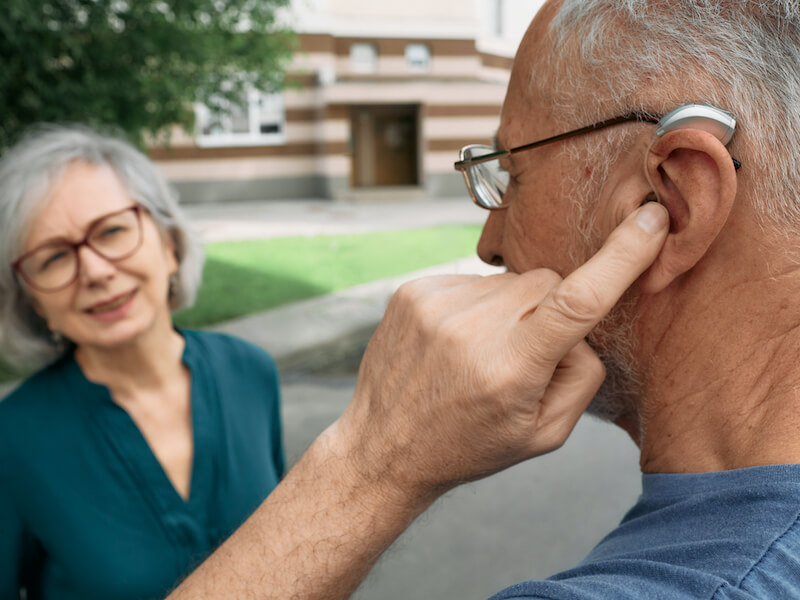
Have you ever been watching your favorite Netflix movie when your internet suddenly cuts out? You sit there and watch that spinning circle instead of finding out who won that cooking competition. All you can do is wait around for it to come back. Perhaps it’s your modem, could be your router, possibly it’s the internet provider, or maybe it’ll just fix itself. It sort of stinks.
When technology malfunctions, it can be very aggravating. The same is certainly true of your hearing aids. When they’re functioning correctly, hearing aids can help you stay connected with the ones you love and better hear co-workers when they speak to you.
But your symptoms of hearing loss can suddenly become extremely frustrating when your hearing aids quit working. The technology you’re depending on has let you down. How do hearing aids just quit working? So how do you cope with that? Here are the three common ways your hearing aids can fail and how to troubleshoot and identify them.
Three common issues with hearing aids (and some possible solutions)
Hearing aids are complex devices. Even still, there are some common problems that people with hearing aids might experience. Here’s what could be causing those issues (and what you can do to correct them).
Feedback and whistling
Perhaps you suddenly start to hear a terrible high-pitched whistling while you’re attempting to have a conversation with a friend or family member. Or perhaps you notice some feedback. You begin to think, “this is weird, what’s up with this whistling”?
Feedback and whistling can be caused by these possible issues:
- You might not have your hearing aids seated properly in your ears. Try removing them and putting them back in. You can also try reducing the volume (if this works, you may find some temporary relief, but it also likely means that the fit is indeed not quite right and you should speak with us about it).
- The functionality of your hearing aid can be impacted by earwax buildup in your ear canal. You’ll find this comes up fairly regularly. Whistling and feedback are frequently one result of this type of earwax buildup. You can attempt to clean some of the earwax out (never use a cotton swab) and if that doesn’t work out, you can get some assistance from us.
- The tubing that attaches the hearing aid with the earmold, on behind-the-ear models, can sometimes become compromised. Have a close look to identify whether the tube might have separated or might be damaged somehow.
Depending on the root cause of the feedback, we can help you deal with these problems if you can’t fix them on your own.
No sound coming from your hearing aids
Your hearing aids should make, well, sound. That’s their principal function! Something has undoubtedly gone wrong if you can’t hear any sound coming out of your hearing aid. So what could cause hearing aids to lose all sound? Well, there are a couple of things:
- Power: Everybody forgets to turn their hearing aids on once in a while. Make certain that’s not the problem. This potential issue can then be eliminated..
- Your settings: Scroll through the custom settings if your device includes them. It’s feasible your hearing devices are not on the right custom setting (so perhaps your hearing aids think you’re in a gymnasium instead of at the kitchen table). This balance could throw off the sound you’re hearing.
- Earwax buildup: Here we go again with the earwax! Examine your device for indications of earwax on the microphone or speakers or any sensitive parts. Keep your device very clean.
- Batteries: Be sure your batteries are completely charged. And whether your batteries are rechargeable or not, it may be worth switching them out for new ones.
We’re here for you if these steps don’t clear your issues up. We’ll be able to help you identify the next steps, and whether maintenance, repair, or replacement is required.
When you have your hearing aids in, you feel pain in your ears
Maybe your hearing aids are fine functionally but they hurt when you put them in. And you’re likely wondering why your hearing aids would make your ears hurt. You’re not as likely to use your hearing aids every day if they hurt your ears. So, what could be causing it?
- Fit: The most obvious issue can be the fit. After all, most hearing aids work best when the fit is nice and snug. Which means that there can sometimes be discomfort involved in a poor fit. Some models of hearing aid can be fit to the specific shape of your ears. The better the fit, the fewer problems you’ll have with discomfort over the long run. We will be able to help you achieve the best possible fit from your devices.
- Time: Sometimes, it just takes some time to get used to your hearing aids. Each person will have a different adjustment period. When you first get your hearing aids, we can help you get a reasonable idea of the adjustment period you can anticipate. Also, speak with us about any discomfort you might be experiencing.
Take your new hearing aid out for a test ride
Before you decide on a set of hearing aids, it’s a smart idea to try them out for a while. Most of the time we will have loaner pairs for you to try out before you make a decision.
As a matter of fact, we can help you figure out the best type of hearing aid for your requirements, adjust the fit to match your ears, and help you take care of any ongoing problems you might have with your devices. We will be your resource for any assistance you need.
And that’s a lot more than you will get with an over-the-counter hearing aid!